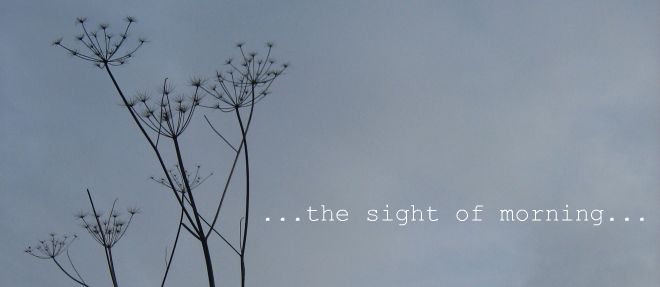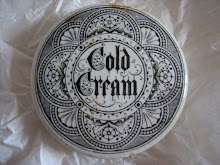I approached the first day with trepidation.
Painting is not my recreation of choice.
Did the sight of goose feathers and oak gall ink
increase or decrease my confidence?
"Decrease" is the correct answer.
But all was not lost!
I have not forgotten how to use tracing paper
and so could fearlessly copy masterpieces
and reinterpret them in the Basic style.
This is Ellie, History of Art graduate,
demonstrating crazy quill and ink skills.
The Renaissance Workshop used a variety of ingredients:
silverpoint drawing on a surface of crushed bird bone,
oak gall ink, lamp black ink,
rabbit skin glue, ox glue.
sienna, ochre, umber, vermillion,
lapis lazuli, azurite, orcein,
lime white, lead white, gold leaf.
And egg yolk.
Here is a master class
by Professor Alan Pascuzzi,
academic, artist and teacher,
on how to crack an egg.
The egg yolk is used as emulsion
for pigment in tempera paintings.
First apply gold leaf to your icon
and then paint.
With egg yolk.
Simple. No?
This is the lovely Marianne
carefully re-creating an icon.
I should explain that egg tempera dries quickly
so you have to know what you are doing.
Which I did not.
(Imagine a learner driver on the M25)
Wet fresco plaster dries even quicker.
You need to finish painting within an hour.
Which I did not.
(Imagine a learner driver in the fast lane of M25)
Here is MrM concentrating hard.
I think he looks quite adorable.
I must regretfully admit
that MrM's icon was better than mine.
Mine looked like Wendy the Witch.
*****
We both had a most enjoyable week
and the informative lectures,
site visits and practical sessions
have completely changed
our appreciation of Renaissance art.
Many thanks to the British Institute
and to Professor Alan Pascuzzi
who was incredibly patient
with his Renaissance 'apprentices'.
Painting is not my recreation of choice.
Did the sight of goose feathers and oak gall ink
increase or decrease my confidence?
"Decrease" is the correct answer.
But all was not lost!
I have not forgotten how to use tracing paper
and so could fearlessly copy masterpieces
and reinterpret them in the Basic style.
This is Ellie, History of Art graduate,
demonstrating crazy quill and ink skills.
The Renaissance Workshop used a variety of ingredients:
silverpoint drawing on a surface of crushed bird bone,
oak gall ink, lamp black ink,
rabbit skin glue, ox glue.
sienna, ochre, umber, vermillion,
lapis lazuli, azurite, orcein,
lime white, lead white, gold leaf.
And egg yolk.
Here is a master class
by Professor Alan Pascuzzi,
academic, artist and teacher,
on how to crack an egg.
The egg yolk is used as emulsion
for pigment in tempera paintings.
First apply gold leaf to your icon
and then paint.
With egg yolk.
Simple. No?
This is the lovely Marianne
carefully re-creating an icon.
I should explain that egg tempera dries quickly
so you have to know what you are doing.
Which I did not.
(Imagine a learner driver on the M25)
Wet fresco plaster dries even quicker.
You need to finish painting within an hour.
Which I did not.
(Imagine a learner driver in the fast lane of M25)
Here is MrM concentrating hard.
I think he looks quite adorable.
I must regretfully admit
that MrM's icon was better than mine.
Mine looked like Wendy the Witch.
*****
We both had a most enjoyable week
and the informative lectures,
site visits and practical sessions
have completely changed
our appreciation of Renaissance art.
Many thanks to the British Institute
and to Professor Alan Pascuzzi
who was incredibly patient
with his Renaissance 'apprentices'.
.jpg)








.jpg)






I.Would.LOVE.This.Workshop!
ReplyDeleteIt was great fun. I imagined it would be all about artistic expression but the point is to understand the materials and processes to help your appreciation of art.
DeleteThis is serious stuff.
ReplyDeleteWe had so much fun - and there was nothing serious about my icon.
DeleteI an so envious. What a fabulous week.
ReplyDeleteIt was - and it was good to have something completely different to think about.
DeleteRabbit skin glue? Poor Flopsy.
ReplyDeleteI am reliably informed that if rabbits smell the glue they go beserk.
DeletePS I think you are very brave to do this. I would have broken out in a cold sweat at the very idea of showing my drawings to anyone.
ReplyDeleteYou've reminded me - I have printmaking homework to do. Thankfully none of which requires skills beyond entry level finger painting.
ReplyDeleteIcon christmas card, Magpies?
Why not reinterpret the icon using fingerpainting...
Delete*thoughtful face*
Monday Morning and I've turned my computer on to find you are back. I'm so gald you were able to take a break and hopefully get the rest you have needed. The trip to Florence sounds lovely and OH! My! What an interesting and fun workshop to take. I bet the techniques were fascinating. (I used to use rabbit skin glue to back my blocked needlepoint.)
ReplyDeleteSo glad to see you back!
(liz in Missouri, USA)
Hello lovely Liz in Missouri - thank you for your message - I am glad to be back because it gives me the chance to share these pictures of a memorable holiday.
DeleteSo happy and relieved to have popped in today and to discover normal service has been resumed. I had hoped you had gone on an extended summer holiday and that all was well. An amazing week in Florence suffices. Lovely to have you back. Love Penny L in Dorsetx
ReplyDeleteHello Penny - you are very kind. A week of Italian ice cream is very restorative - I can recommend it!
DeleteI have serious workshop envy! Good to see you back.
ReplyDeleteI can't recommend the rabbit skin glue - it smells very rabbity - but painting with egg yolk is good fun.
DeleteMrM is adorable.
ReplyDeleteAnd i, too, think an icon Christmas card from the Magpies sounds like an excellent idea.
If you want to get an idea of how it is all done check out the Manchester Madonna by Michelangelo on Wikipedia.
ReplyDeleteAlso not to forget the squirrel hair brush for goldleafing.
I can see no rodent is going to be safe Chez Magpies ...
Delete